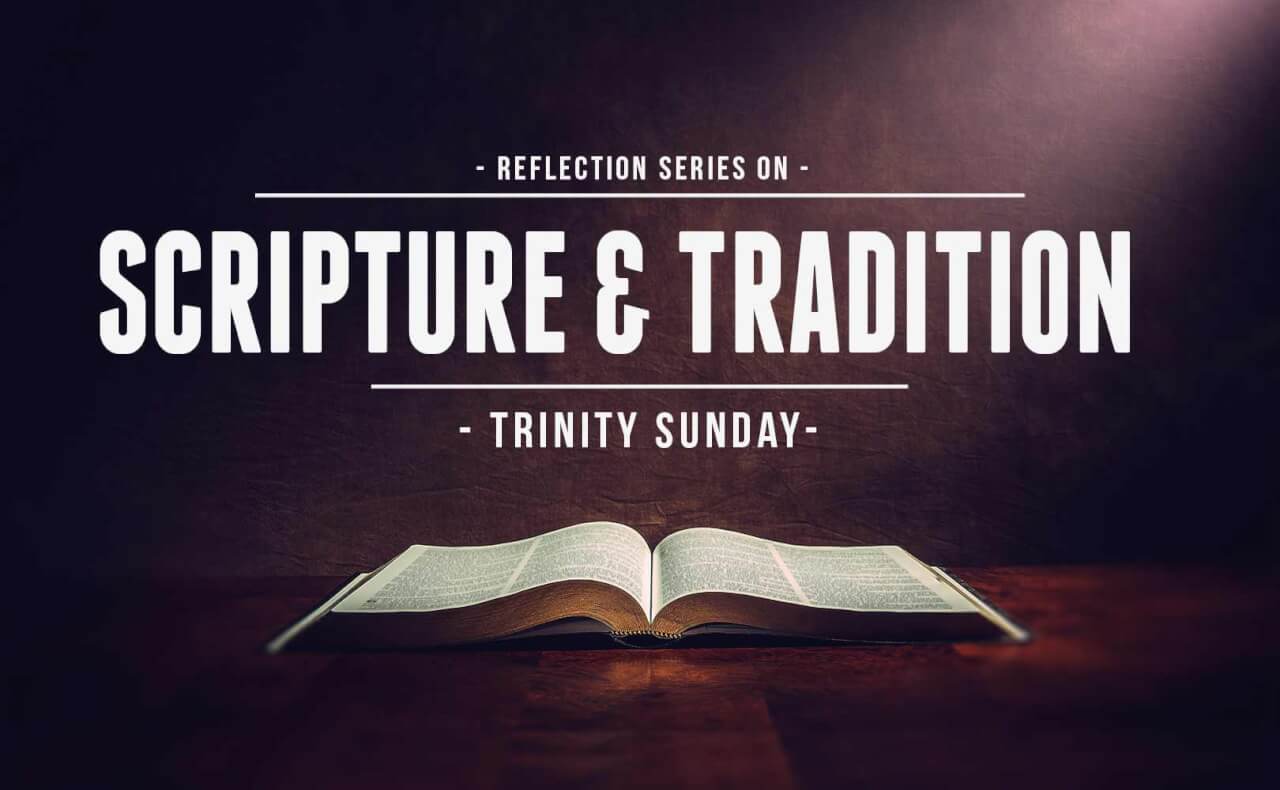Epistle: Romans 11:33-36
Gospel: Matthew 28:18-20
O almighty and everlasting God, who hast granted to Thy servants, in confessing the true Faith, to acknowledge the glory of the eternal Trinity, and in the power of Majesty to adore the Unity: we beseech Thee, that by steadfastness in the same Faith, we may ever be defended against all adversity.
—From the Collect for Trinity Sunday
Hidden in plain sight throughout the Scriptures is the doctrine of the Trinity, the cornerstone of the Catholic Faith. Although the term “Trinity” is never found in the Bible, and no one passage details the doctrine, the story of salvation found in the Sacred Text proclaims the reality of One God in Three Persons.
We find hints of the Trinity in the Old Testament. At Creation, God says, “Let us make man to our image and likeness” (Gen 1:26), using the plural form to refer to Himself. The Church Fathers understood this passage to be a communication among the Persons of the Trinity. Further, in various places, there is a distinction between God and the Son of God (cf. Ps. 2:7, Is. 7:14, Is. 9:6), hinting at a diversity in the Godhead. We also see in the Old Testament the personification, and even divinization, of Wisdom (Wis. 7:22–30), which the Church Fathers later saw as pointing to the divine Logos, Jesus Christ.
In the New Testament, the Trinity is openly revealed, although not in the philosophical language that would later be used by the Church. At the Annunciation, the Angel Gabriel says, “The Holy Ghost shall come upon thee, and the power of the most High shall overshadow thee. And therefore also the Holy which shall be born of thee shall be called the Son of God” (Lk. 1:35). Three distinct Persons are named: the “most High,” the Son of God, and the Holy Ghost. At the Baptism of Christ we read, “Jesus being baptized, forthwith came out of the water: and lo, the heavens were opened to him: and he saw the Spirit of God descending as a dove, and coming upon him. And behold a voice from heaven, saying: ‘This is my beloved Son, in whom I am well pleased’” (Mt. 3:16–17). Again, three Persons: God the Father speaking, God the Son being baptized, and the Spirit of God descending.
The most explicit Scripture reference to the Trinity is found in today’s Gospel: “Going therefore, teach ye all nations; baptizing them in the name of the Father, and of the Son, and of the Holy Ghost” (Mt 28:19). By commanding baptism in the (single) “name” of the Three Persons, Jesus is clearly revealing them as equal in dignity while remaining distinct in identity. As St. Jerome later wrote, “[t]hey were baptized in the name of the Father and of the Son and of the Holy Spirit so that the three who are one in divinity might also be one in giving themselves. The name of the Trinity is the name of the one God” (Commentary on Matthew 4.28.20).
The reality of the Trinity proclaims that “God is love” (1 John 4:8). Love, as St. Augustine taught, consists of three aspects: the lover, the beloved, and the love between them. So when St. John wrote that “God is love,” he meant it literally, for within the Godhead we see all three aspects: the lover (the Father), the beloved (the Son), and the love between them (the Holy Spirit). And as we were made in the “image and likeness” of God, we too are made for love — love of God and love of our neighbor (cf. Mt 22:36–40). By following these two great commandments of Christ, we form ourselves more and more into the likeness of the Triune God, who is our eternal destiny.


